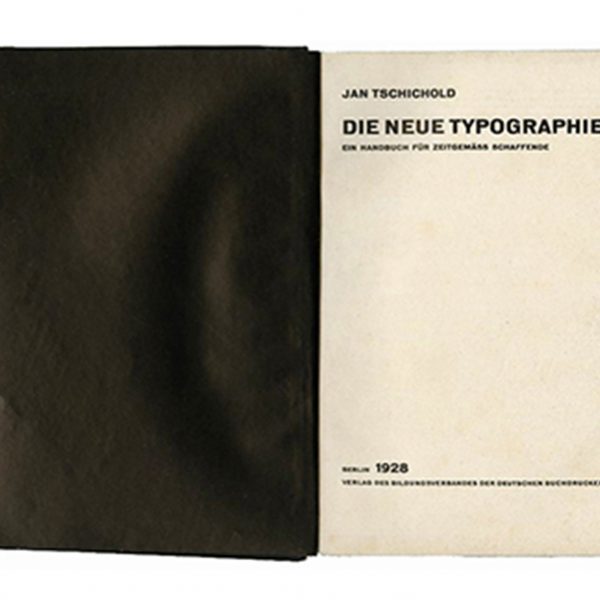For the Card-Carrying Shopper: Kenneth Ames on Christmas Cards
 Kenneth Ames, author of American Christmas Cards 1900-1960 and organizer of the exhibition on view at the Bard Graduate Center through the end of the year, writes on his fascinating study of the artistic and cultural energy that was poured into the imagery, emotions, and stories of these seemingly simple holiday objects. The surprises of American material culture and graphic style of these delightful artifacts are sure to give you something to think about when signing your next card.
Kenneth Ames, author of American Christmas Cards 1900-1960 and organizer of the exhibition on view at the Bard Graduate Center through the end of the year, writes on his fascinating study of the artistic and cultural energy that was poured into the imagery, emotions, and stories of these seemingly simple holiday objects. The surprises of American material culture and graphic style of these delightful artifacts are sure to give you something to think about when signing your next card.
Kenneth Ames—
In theory, studying Christmas cards should have been an easy matter. After all, what is there to say about these little bits of seasonal paper? A good deal, as it turned out. We had made Christmas cards the focus of our project in part because they had been so little studied. That was one of their attractions. We soon recognized that it was one of their challenges as well. For good or ill, scholarship channels thinking. Lack of scholarship on Christmas cards meant that we had to chart our own course of inquiry. These allegedly simple objects quickly became more complex. There could, in fact, be many different ways of studying Christmas cards.
After discussion and dispute and without denying the value of other approaches, we decided to concentrate on the imagery of Christmas cards. Two things particularly struck us. First, the images tended to be specific to Christmas cards. There were exceptions but, on average, a Christmas card could be identified by its distinctly Christmas-card image. This may sound tautological but it had not been the case for Christmas cards of the nineteenth century, nor was it so for some other classes of greeting cards. Second, the categories of Christmas-specific images were surprisingly numerous. We ultimately concentrated on what we thought were the twenty most important but there were still others we had to pass over. In the book we speculated a bit on the purposes of this pictorial diversity but the matter deserves a few more words.
 Christmas card images vary considerably in both form and content but typically are less informational than evocative. There are, as always, exceptions, but the average card bears an image that is both comprehensible yet at some level ambiguous. This ambiguity has less to do with what is being depicted than with what the depiction means. An image, for instance, may unequivocally depict two burning candles. About that, there might be no doubt. But what does an image of two candles mean? The answer is that it depends. And here we confront the productive ambiguity of Christmas card images.
Christmas card images vary considerably in both form and content but typically are less informational than evocative. There are, as always, exceptions, but the average card bears an image that is both comprehensible yet at some level ambiguous. This ambiguity has less to do with what is being depicted than with what the depiction means. An image, for instance, may unequivocally depict two burning candles. About that, there might be no doubt. But what does an image of two candles mean? The answer is that it depends. And here we confront the productive ambiguity of Christmas card images.
What feelings, moods, or associations an image of two candles evokes will depend on who views it. For some, it might prompt meditation or introspection along the lines sketched out by French philosopher Gaston Bachelard in The Psychoanalysis of Fire. For others, it might suggest something else altogether. Now consider a card with an image of a horse-drawn coach carrying merry travelers. Once again, the viewer creates the meaning but that meaning, whatever it might be, is probably quite different from the meaning prompted by the two candles. And so on for every other distinctive category of Christmas card imagery. Taken together, part of what impresses about Christmas cards is the abundance and diversity of evocative strategies they exhibit. Put another way, Christmas cards are notable for the variety of visual and psychic experiences they prompt and provide. This variety allows senders considerable latitude in deciding where to position themselves in terms of their own definition of the holiday and determination of the mood or affective state they wish to project. In other words, the wide range of imagery we identified was socially purposeful. We tried to draw out some of that in the book and, in a somewhat different way, in the exhibition at the Bard Graduate Center as well.
 We could, however, have taken other routes with the project. We might, for instance, have concentrated on people rather than images. All the cards we studied had been used. That means that all bore the names of senders. Cards signed “John and Mary” or “The Smith family” were not particularly informative but now and then senders could be identified. This was particularly so for calling-card varieties of the 1920s, a fair number of which we traced to prominent families. Sometimes a documented card illuminated a larger historical or cultural point. A photographically illustrated card sent in 1946 was like many others of the period except for the fact that it was from Dan and Ruth Boorstin and their sons. Daniel Boorstin was on the faculty of the University of Chicago at the time. He went on to write some twenty books and eventually to become Librarian of Congress. So here was a card linked to a prominent American. But Boorstin was also Jewish. The fact that his family sent out Christmas cards was of interest to students curious about past Jewish engagement with this holiday. In the case of this Jewish family and presumably many others, sending Christmas cards was apparently a way of participating in American cultural life, further evidence that Christmas has long been understood as a celebration more secular than religious.
We could, however, have taken other routes with the project. We might, for instance, have concentrated on people rather than images. All the cards we studied had been used. That means that all bore the names of senders. Cards signed “John and Mary” or “The Smith family” were not particularly informative but now and then senders could be identified. This was particularly so for calling-card varieties of the 1920s, a fair number of which we traced to prominent families. Sometimes a documented card illuminated a larger historical or cultural point. A photographically illustrated card sent in 1946 was like many others of the period except for the fact that it was from Dan and Ruth Boorstin and their sons. Daniel Boorstin was on the faculty of the University of Chicago at the time. He went on to write some twenty books and eventually to become Librarian of Congress. So here was a card linked to a prominent American. But Boorstin was also Jewish. The fact that his family sent out Christmas cards was of interest to students curious about past Jewish engagement with this holiday. In the case of this Jewish family and presumably many others, sending Christmas cards was apparently a way of participating in American cultural life, further evidence that Christmas has long been understood as a celebration more secular than religious.
 Sometimes names on cards led to disturbing stories. One identifiable sender was Earl B. McKinley. McKinley was a passenger on the Hawaii Clipper, a legendary aircraft which disappeared on a flight from Guam toManilain July 1938. Exactly what happened has prompted considerable speculation; if curious, Google to learn more. Other cards were mailed to or from troubled places or reference calamities – the Halifax explosion of 1917, the influenza pandemic of 1918, or the miseries of the Great Depression. On a happier note, however, clusters of signed cards in their original addressed envelopes can be exceptionally revealing tools for the study of community and patterns of affiliation. Although our sample of cards did not support such study, accumulations of old cards from attics, trunks, and chests of drawers sent in a given period to a single household still appear regularly in the marketplace and can be valuable to local historians interested in reconstructing social life and interaction in a community. And even – or perhaps especially – when the names cannot be traced, signed Christmas cards sent years ago attest to the social and affective lives of ordinary people.
Sometimes names on cards led to disturbing stories. One identifiable sender was Earl B. McKinley. McKinley was a passenger on the Hawaii Clipper, a legendary aircraft which disappeared on a flight from Guam toManilain July 1938. Exactly what happened has prompted considerable speculation; if curious, Google to learn more. Other cards were mailed to or from troubled places or reference calamities – the Halifax explosion of 1917, the influenza pandemic of 1918, or the miseries of the Great Depression. On a happier note, however, clusters of signed cards in their original addressed envelopes can be exceptionally revealing tools for the study of community and patterns of affiliation. Although our sample of cards did not support such study, accumulations of old cards from attics, trunks, and chests of drawers sent in a given period to a single household still appear regularly in the marketplace and can be valuable to local historians interested in reconstructing social life and interaction in a community. And even – or perhaps especially – when the names cannot be traced, signed Christmas cards sent years ago attest to the social and affective lives of ordinary people.
In the end, any listing of democratic arts in these United States must include Christmas cards. We knew at the outset that our study of these objects was little more than an introduction to the material and by no means definitive. It was our hope, however, that we might be able to raise this category of goods to higher visibility. Christmas cards had been hidden in plain sight for far too long. Perhaps our project will play a part in changing that.
Kenneth L. Ames is professor of American decorative arts at the Bard Graduate Center. He is the author of Beyond Necessity: Art in the Folk Tradition and Death in the Dining Room and Other Tales of Victorian Culture, and editor of Victorian Furniture.

























